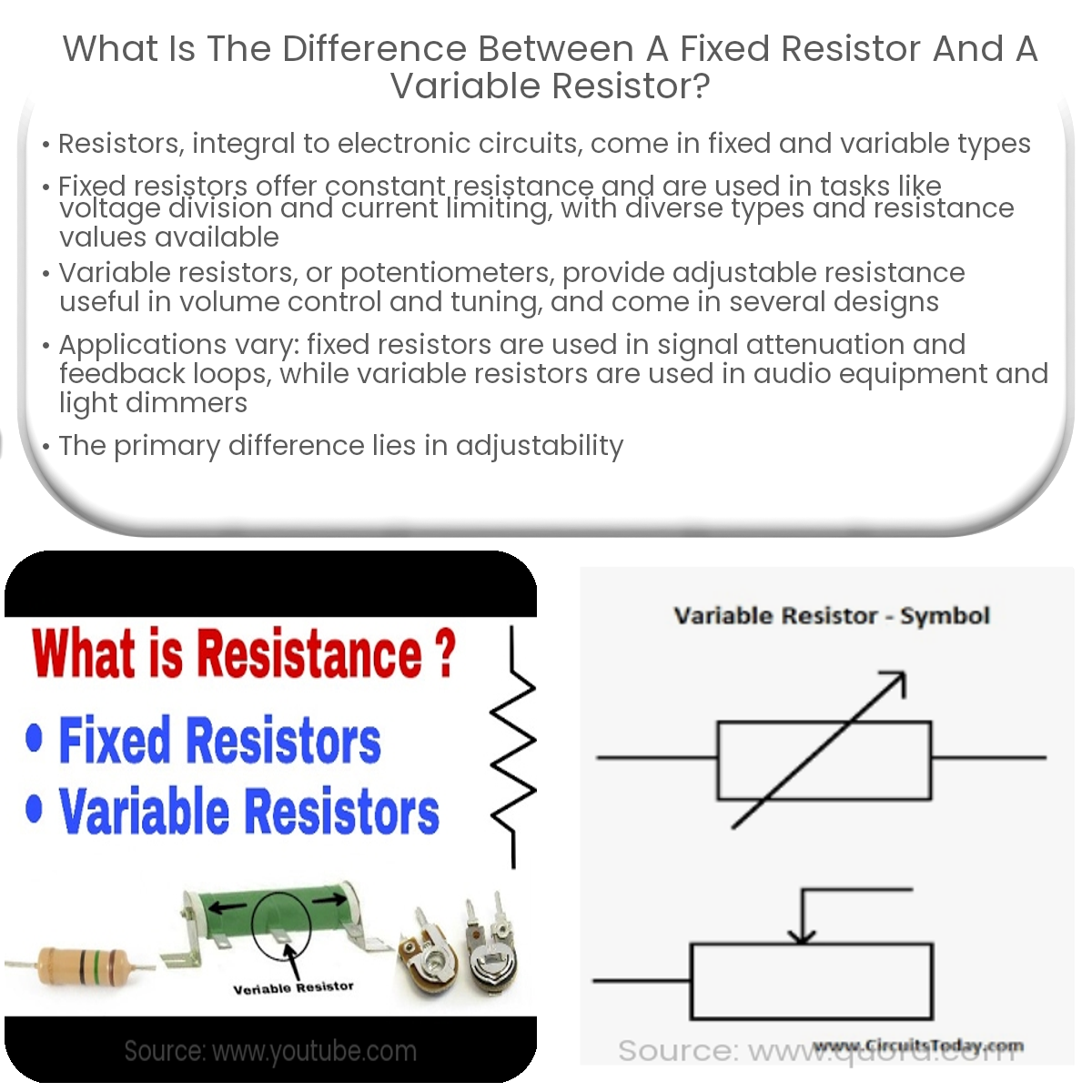Fixed resistors have a constant resistance value, while variable resistors allow for adjustable resistance, suiting different applications.
Fixed Resistor vs. Variable Resistor: Understanding the Differences
Resistors are crucial components in electronic circuits, controlling current flow and voltage levels. They come in various types, with fixed and variable resistors being two common classifications. This article will explore the differences between fixed and variable resistors and their respective applications.
Fixed Resistors
Fixed resistors have a constant resistance value that cannot be changed. They are used in a wide range of electronic circuits to perform tasks such as voltage division, current limiting, and signal attenuation. Some key features of fixed resistors include:
- Constant resistance: The resistance value remains fixed and does not change during operation.
- Various types: Fixed resistors come in different forms, such as carbon film, metal film, wirewound, and surface-mount, each with its unique properties and applications.
- Range of values: Fixed resistors are available in a broad range of resistance values and tolerances, allowing them to be used in diverse applications.
Variable Resistors
Variable resistors, also known as potentiometers or rheostats, have an adjustable resistance value. They are used in applications where it’s necessary to vary resistance, such as controlling volume, tuning, or adjusting signal levels. Some key features of variable resistors include:
- Adjustable resistance: The resistance value can be altered by adjusting a knob, slider, or screw, depending on the design.
- Three-terminal device: Variable resistors typically have three terminals, with the center terminal (wiper) providing the adjustable output voltage or resistance value.
- Various designs: Variable resistors come in different forms, such as rotary, linear, and digital potentiometers, each suited for specific applications.
Applications
Fixed and variable resistors find use in various applications:
- Fixed resistor applications: Voltage dividers, current limiters, biasing, signal attenuation, and feedback loops in amplifiers.
- Variable resistor applications: Volume control in audio equipment, tuning in radios, light dimmers, and sensor calibration.
Conclusion
The main difference between fixed and variable resistors lies in their adjustability. Fixed resistors have a constant resistance value, while variable resistors allow for adjustment of their resistance. Understanding the differences and applications of these resistors will enable you to choose the right component for your specific circuit design needs.


